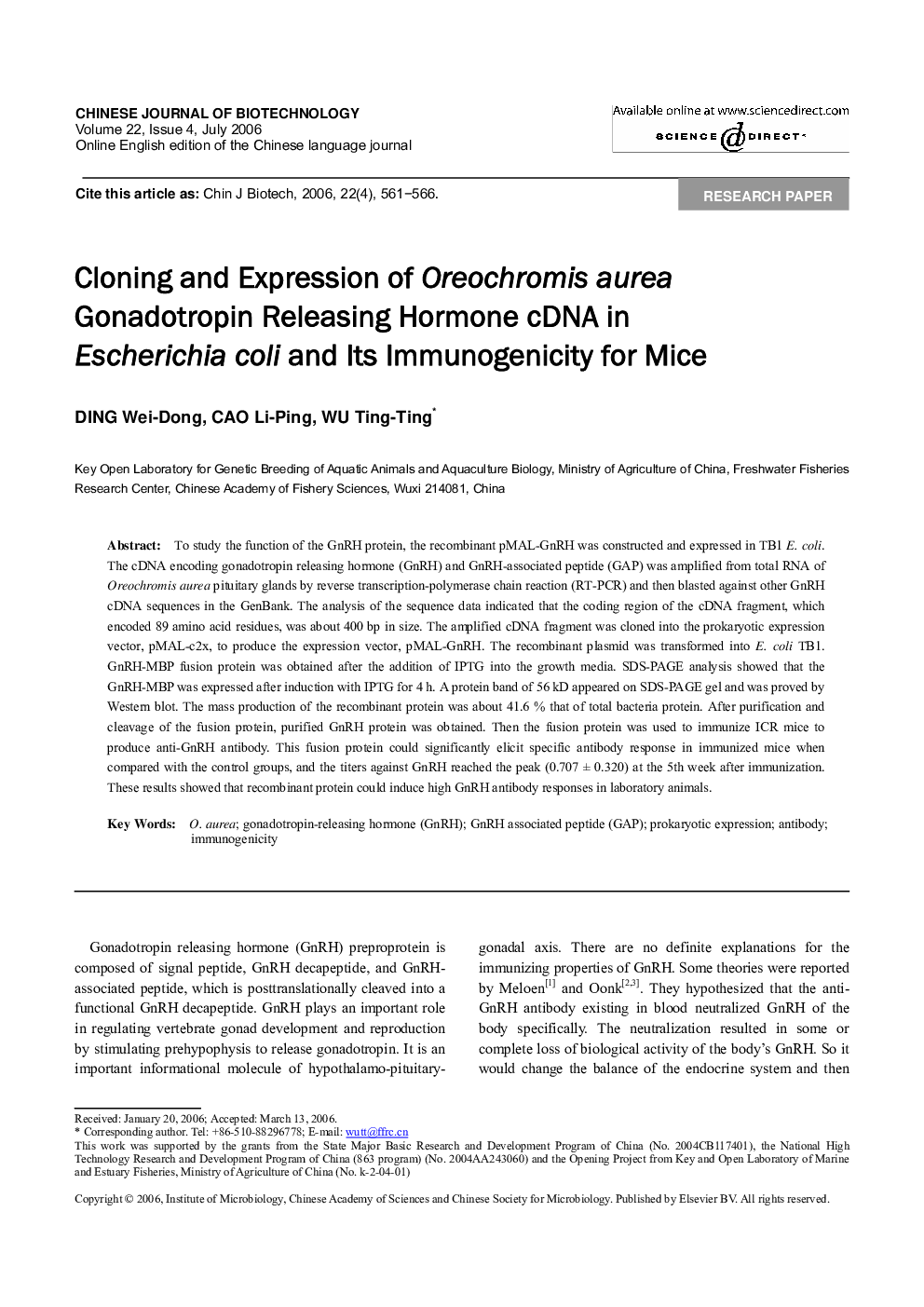| Article ID | Journal | Published Year | Pages | File Type |
|---|---|---|---|---|
| 2079028 | Chinese Journal of Biotechnology | 2006 | 6 Pages |
Abstract
To study the function of the GnRH protein, the recombinant pMAL-GnRH was constructed and expressed in TB1 E. coli. The cDNA encoding gonadotropin releasing hormone (GnRH) and GnRH-associated peptide (GAP) was amplified from total RNA of Oreochromis aurea pituitary glands by reverse transcription-polymerase chain reaction (RT-PCR) and then blasted against other GnRH cDNA sequences in the GenBank. The analysis of the sequence data indicated that the coding region of the cDNA fragment, which encoded 89 amino acid residues, was about 400 bp in size. The amplified cDNA fragment was cloned into the prokaryotic expression vector, pMAL-c2x, to produce the expression vector, pMAL-GnRH. The recombinant plasmid was transformed into E. coli TB1. GnRH-MBP fusion protein was obtained after the addition of IPTG into the growth media. SDS-PAGE analysis showed that the GnRH-MBP was expressed after induction with IPTG for 4 h. A protein band of 56 kD appeared on SDS-PAGE gel and was proved by Western blot. The mass production of the recombinant protein was about 41.6% that of total bacteria protein. After purification and cleavage of the fusion protein, purified GnRH protein was obtained. Then the fusion protein was used to immunize ICR mice to produce anti-GnRH antibody. This fusion protein could significantly elicit specific antibody response in immunized mice when compared with the control groups, and the titers against GnRH reached the peak (0.707 ± 0.320) at the 5th week after immunization. These results showed that recombinant protein could induce high GnRH antibody responses in laboratory animals.
Related Topics
Life Sciences
Biochemistry, Genetics and Molecular Biology
Biotechnology
Authors
DING Wei-Dong, CAO Li-Ping, WU Ting-Ting,
